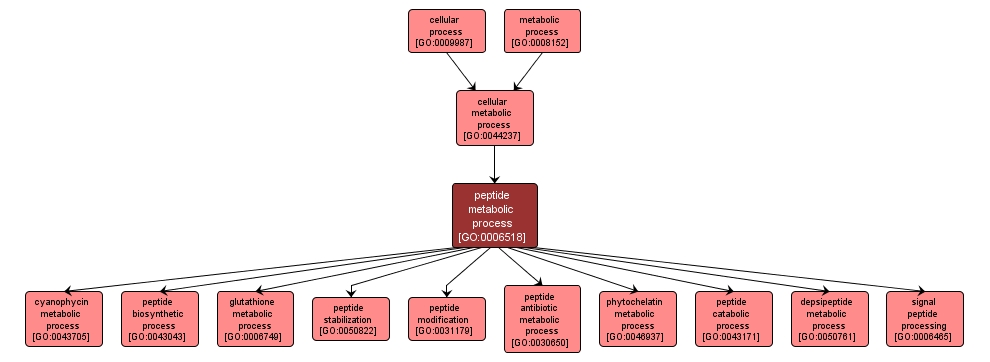GO TERM SUMMARY
|
| Name: |
peptide metabolic process |
| Acc: |
GO:0006518 |
| Aspect: |
Biological Process |
| Desc: |
The chemical reactions and pathways involving peptides, compounds of two or more amino acids where the alpha carboxyl group of one is bound to the alpha amino group of another. |
| Synonyms:
|
|

|
INTERACTIVE GO GRAPH
|














